The HTC 10 Review
by Joshua Ho on September 19, 2016 8:00 AM ESTSoftware UX: HTC Sense
Ultimately, one of the major points of differentiation between Android devices is the software experience. While “stock Android” is an excellent base, there is a lot of room for differentiation here. Something as simple as the launcher lacks a weather clock, and while you can argue that end users are going to install their own widgets and apps, there are a lot of users that are never going to do anything other than install Facebook, Snapchat, and some other cursory applications and have zero interest in smartphones as anything other than an appliance. Even if you do enjoy adding your own launcher and similar customizations, it’s also nice to be able to have a phone that does most of everything that you want it to out of the box without the need to unlock the bootloader and start flashing custom kernels to fix issues like RAM management. It’s also nice to not have to immediately download themes or something similar.
In the case of HTC, they’re no strangers to customizing the OS of their devices. TouchFLO has been around since the days of Windows Mobile, and with Android they’ve been shipping HTC Sense in some shape or form for pretty much every device they’ve shipped. With the HTC 10, HTC has finally gotten around to redesigning Sense to better fit Android design guidelines that have evolved since Lollipop. While internally this seems to be “Sense 8”, outwardly HTC is no longer attaching version numbers to emphasize more strongly that design and functionality is more or less continuously updated as almost all major components of HTC Sense are now updated through the Play Store rather than in large chunks with OTAs.
With the launch of the HTC 10, in addition to design changes HTC has greatly changed their philosophy with how they modify Android. Rather than attempting to replace all Google applications with HTC’s, the shipping software generally only contains HTC apps where they make sense and Google applications where they don’t. A pretty good example of this is dialer/contacts application. With Google’s version of the dialer, the contacts section is fairly basic. You’re able to see some phone numbers but there’s no ability to control whether the same person across multiple accounts can be merged together, and you can’t decide whether to show or hide contacts without a phone number. The HTC variant of this application is just more powerful as you can manage contacts in meaningful ways.
Similarly, the HTC Messages app manages to retain a lot of the Material Design that a user would expect from Android, but unlike the Google Messages or Hangouts app there are extra features like SMS backup and restoration, as well the ability to password protect messages, automatically block messages from certain recipients, and automatically delete messages to reduce storage consumption if needed. These sorts of things can be found in Play Store applications, but actually bothering to go search for one that doesn’t abuse permissions to mine personal data or spam ads with decent design is a decent amount of effort. While HTC’s application doesn’t do any fancy integration with Facebook Messenger, Hangouts, or any of the other popular IM services for SMS and MMS it’s a well-designed application that does exactly what it needs to do.
I can keep going here but the general idea is the same whether we’re talking about the camera app, clock app, weather app, Blinkfeed, or HTC Mail. Generally speaking, when HTC makes an app to replace the stock Google app it’s done for reasons that actually make a lot of sense. However, the other side of execution is choosing not to ship HTC apps in certain cases, and generally speaking HTC does make the right call a lot of the time. Something like HTC Calendar might be nice to have if you have a use case that Google Calendar doesn’t cover, but in my experience most people aren’t going to really use it. HTC has elected to leave their Calendar application off the device altogether to try and simplify the experience, but for people that want the HTC app it’s still available on the Play Store, which is a good move to make.
HTC is generally going in the right direction here, but I would be remiss to point out at least a few cases where they don’t get the balance right. One example of this is not shipping Snapdragon Browser. While there are publicly available builds of Snapdragon Browser, it’s unlikely that the general public will search around to find a good build. It’s an unfortunate fact of the Android world that Google continues to not optimize Chrome sufficiently in Android, and as a result there’s a major disparity between browser speed between iOS and Android devices even before we get to deltas in single thread CPU performance that are disproportionately felt in Javascript-intensive websites. HTC Internet as nothing more than a simple reskin of Snapdragon Browser updated regularly on the Play Store would be useful even if Chrome remained the only browser on the shipping ROM.
While Chrome is just one app, there are a few other cases where HTC should continue to make their version of the application available on the Play Store like HTC Music and HTC Gallery as Play Music and Google Photos are honestly not that performant and are somehow more confusing to navigate than the HTC applications as they are either cloud-targeted in the case of Google Photos or part storefront and part music player in the case of Play Music. HTC has mostly gotten things right here, but they cut a little too far in the process.
Although app functionality, selection, and design has been the primary focus of the discussion thus far it’s important to also talk about overall design and performance. HTC’s emphasis with Sense this go around has been meshing with Android rather than trying to make it into a new operating system, and for the most part they’ve succeeded. If I use the Nexus 5 for a few days and come back to the HTC 10, there’s nothing about the UI that is unexpected in how it behaves even though Sense has a distinctly different UI. The HTC 10’s software experience in general is also extremely smooth, to the extent that it feels a lot like the Nexus 5 in terms of speed. I keep referring back to the Nexus 5 here, but it remains one of the smoothest Android devices I’ve ever used when it isn’t bottlenecked by storage or some other hardware.
While performance and UI design are generally well-executed, there are some cases where the HTC 10 falls short. A pretty easy example on the performance side is just loading up the dialer and using the tabs to navigate around rather than swiping one panel at a time. It’s pretty easy to get the dialer to start dropping frames aggressively when you do this, and it can also happen in the weather app so I suspect this may just be poor optimization as trying the same thing while rapidly swiping through each panel is as fluid as I’d expect.
Other issues here include the auto brightness, which is arguably a case of HTC going too far in their efforts to make Sense blend with Android. I would argue that auto brightness is fundamentally supposed to eliminate the need for the user to ever manually set brightness, but for whatever reason both Google and HTC don’t do this in their auto brightness UIs, rather just setting a limited range that auto brightness acts in and requiring the user to manually adjust this range for both extremely bright and dim situations. HTC shouldn’t be emulating Google here, and really the only thing that an adjustable slider for auto brightness should be doing is adjusting behavior of auto brightness between two endpoints which should never change. It’s at least mildly ridiculous that I have to adjust brightness every time I walk outside or walk into a dark room when auto brightness is enabled. This is a little bit better as of 1.90, but this is really only true when it comes to outdoor conditions rather than low-light conditions.
Another area where HTC seems to doing some strange things is the quick settings drawer. While it’s admirable to see that HTC is no longer spending design time on something that generally doesn’t need changing, it is at least somewhat irritating that there’s no ability to customize the tiles or order of the quick settings drawer, which is at least somewhat baffling as Google has included this functionality in the form of System UI Tuner for a while now. HTC has gone through the effort of implementing the ability for users to design and share themes, so it’s weird how they missed something relatively simple by comparison. Another weird UI quirk I've noticed across multiple OTAs is how the volume controls don't automatically hide themselves unless you tap on the display, but this is relatively minor in the grand scheme of things.
Overall, while there are niggles here and there, HTC has done a great job with Sense on the HTC 10. While those that want stock Android for the sake of purity might not be happy, for most people HTC Sense is going to be one of the best OEM UIs on Android. HTC generally only adds applications in areas where it makes sense to and keeps the user experience fast and smooth. The UI fits well with Android applications and follows Android conventions for design and navigation as well. There are only a few cases where I really feel like there is a need to improve, compared to a long laundry list of problems that I’ve seen in a lot of other OEM UIs. With this update I would argue that Sense is now one of the best OEM UIs on the market, and when we’re increasingly seeing commoditization of hardware HTC still has some differentiation here, to the extent that it does affect how it compares to other devices overall.


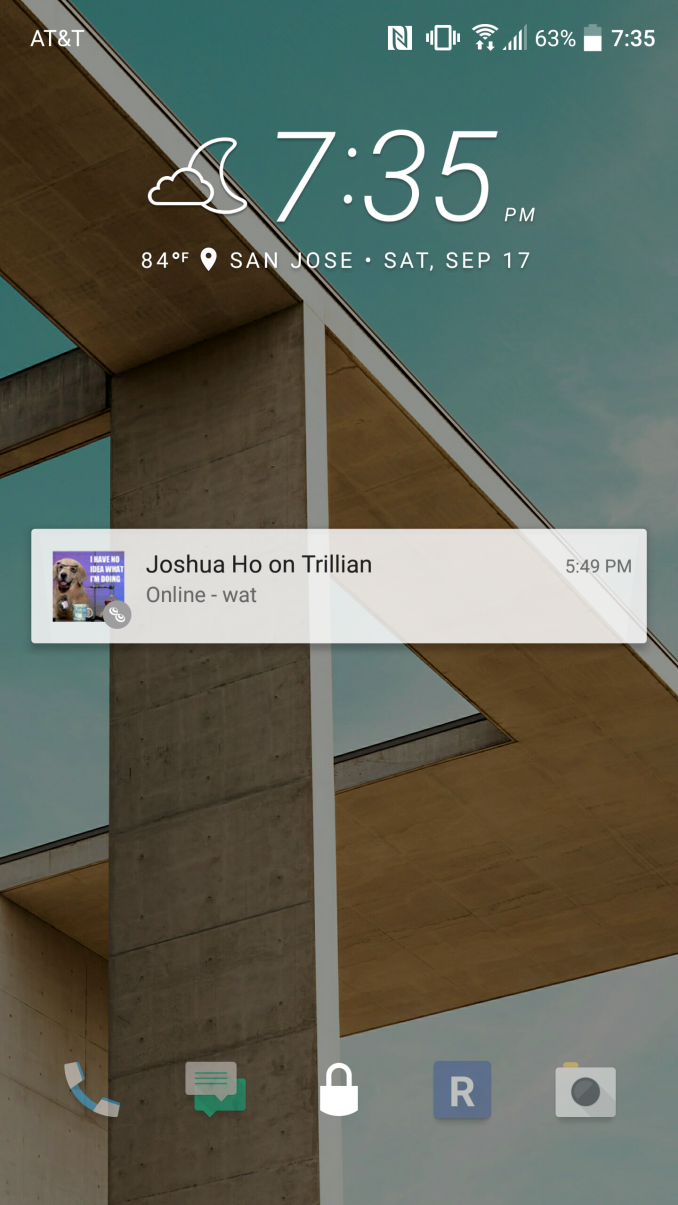
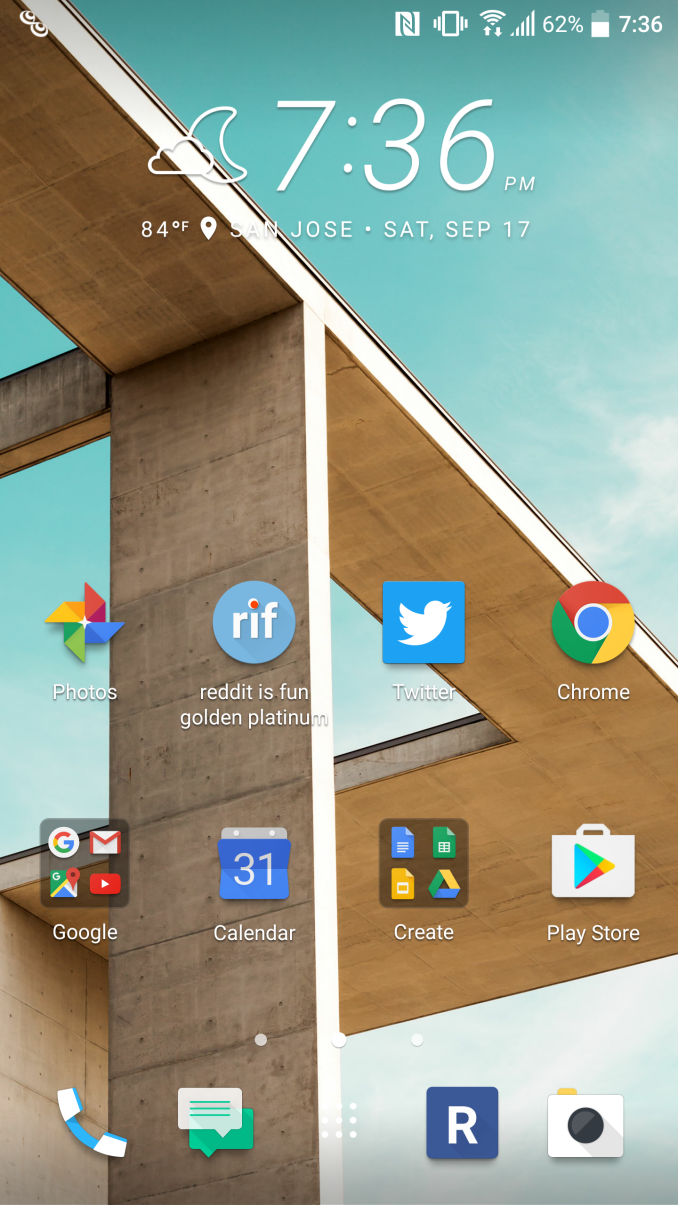
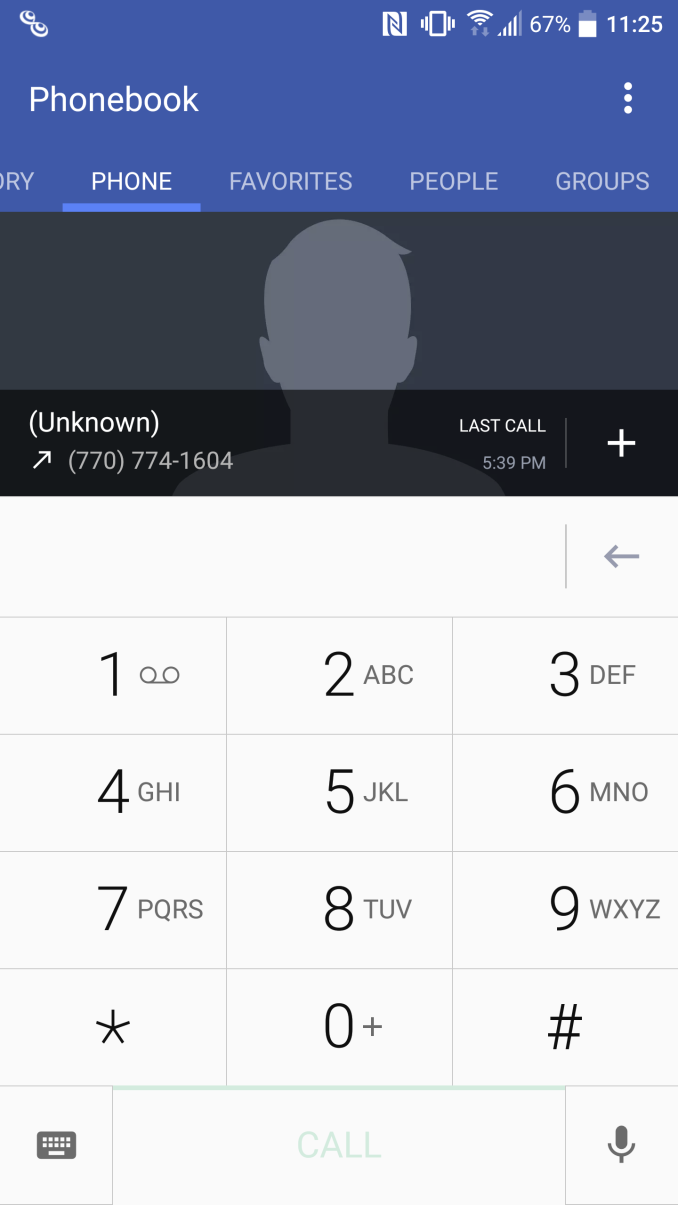
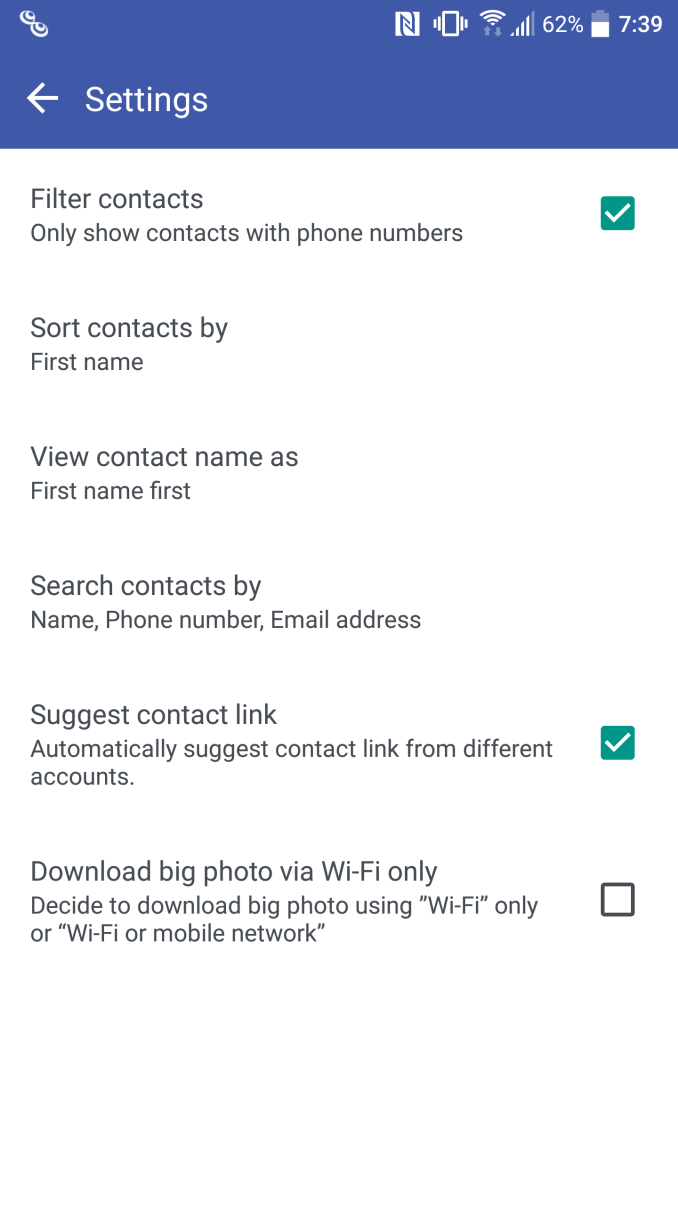
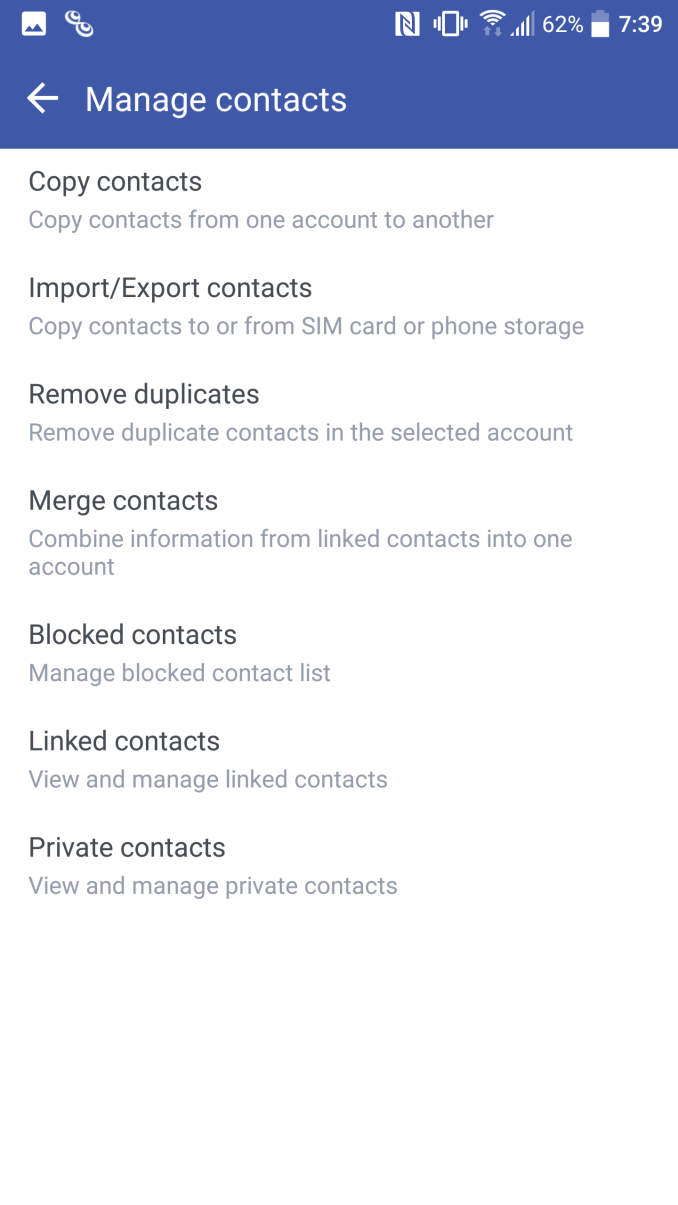
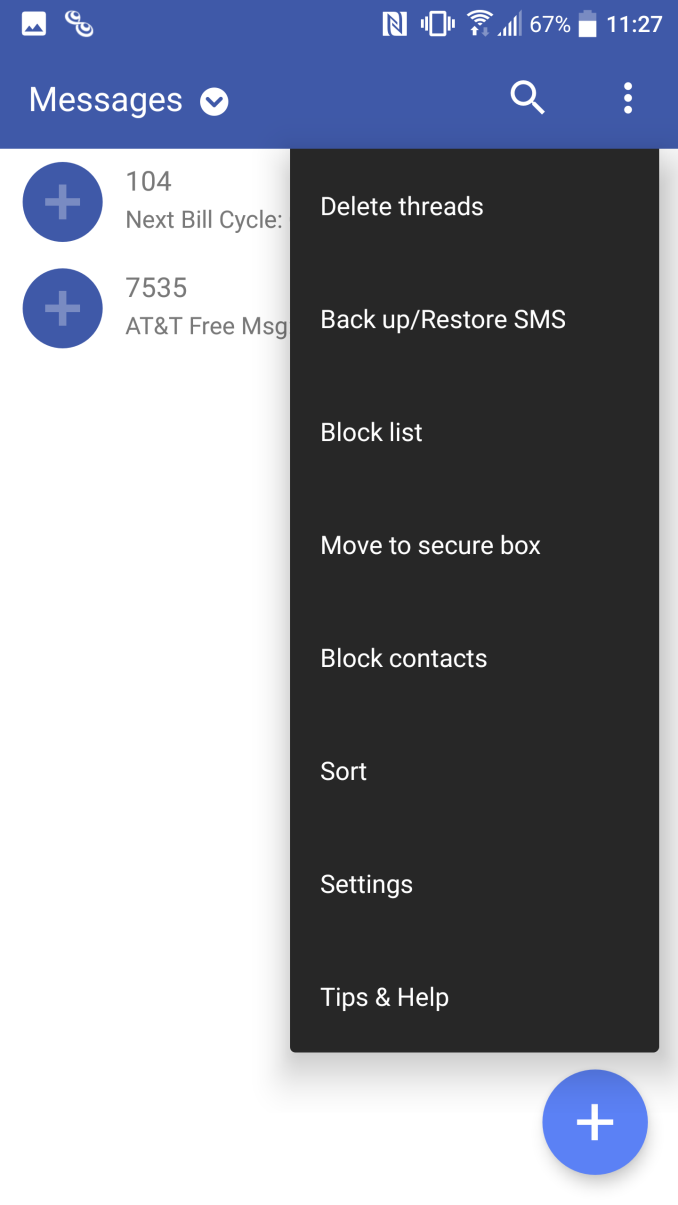
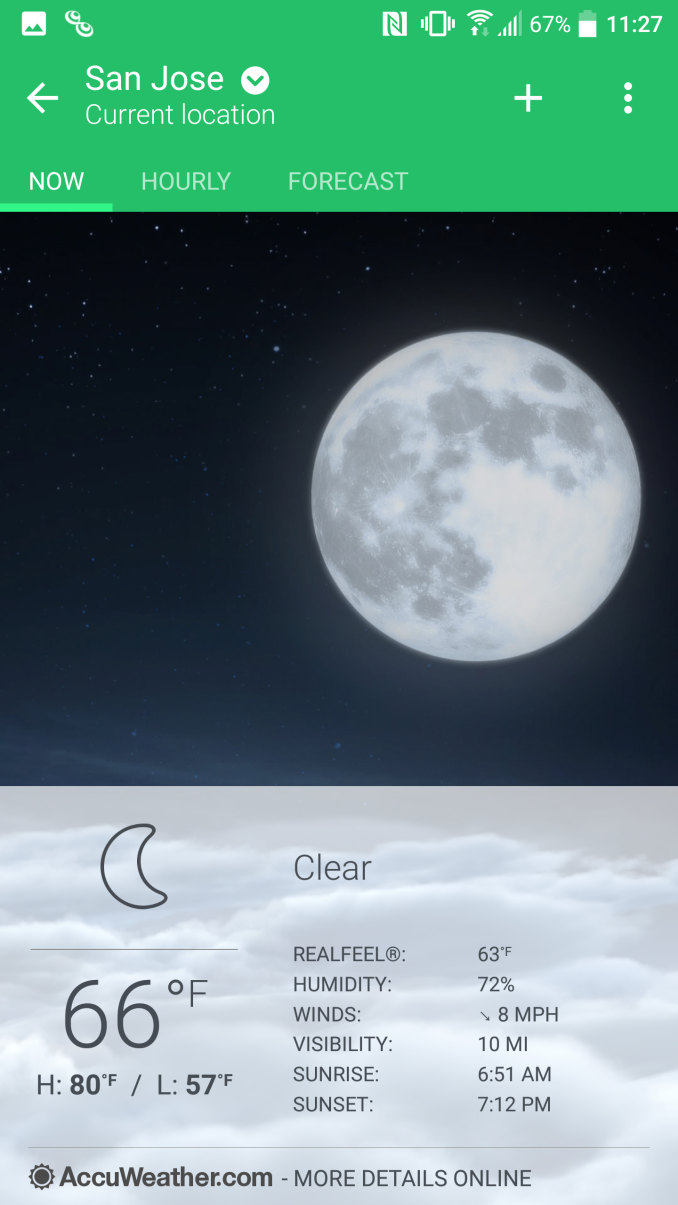

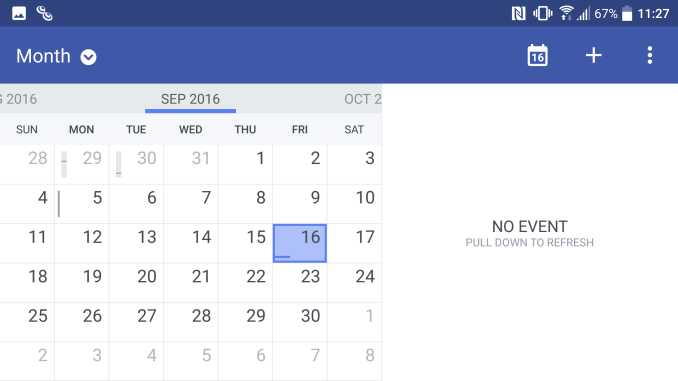

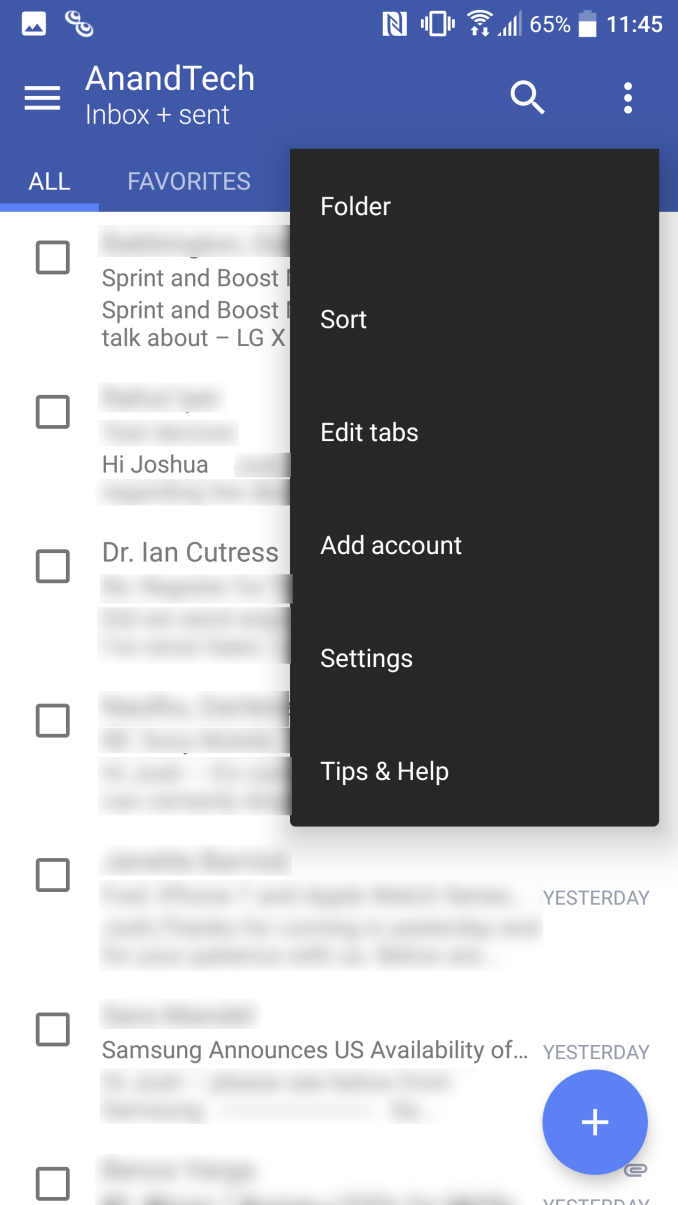
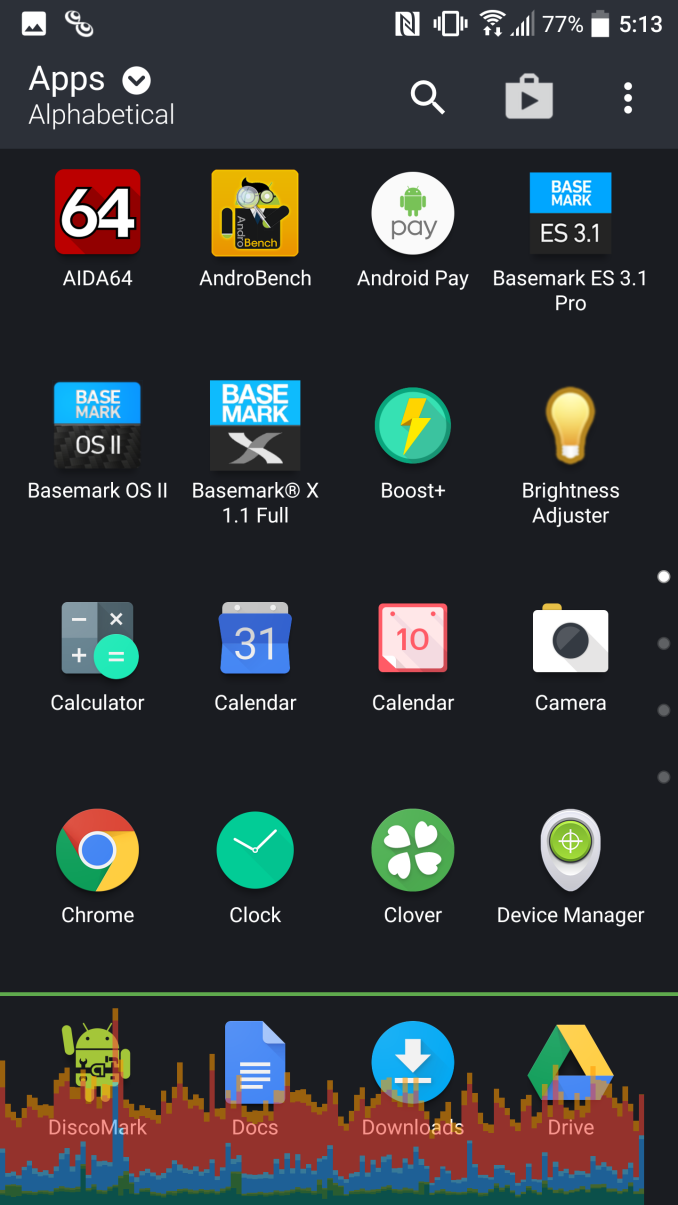
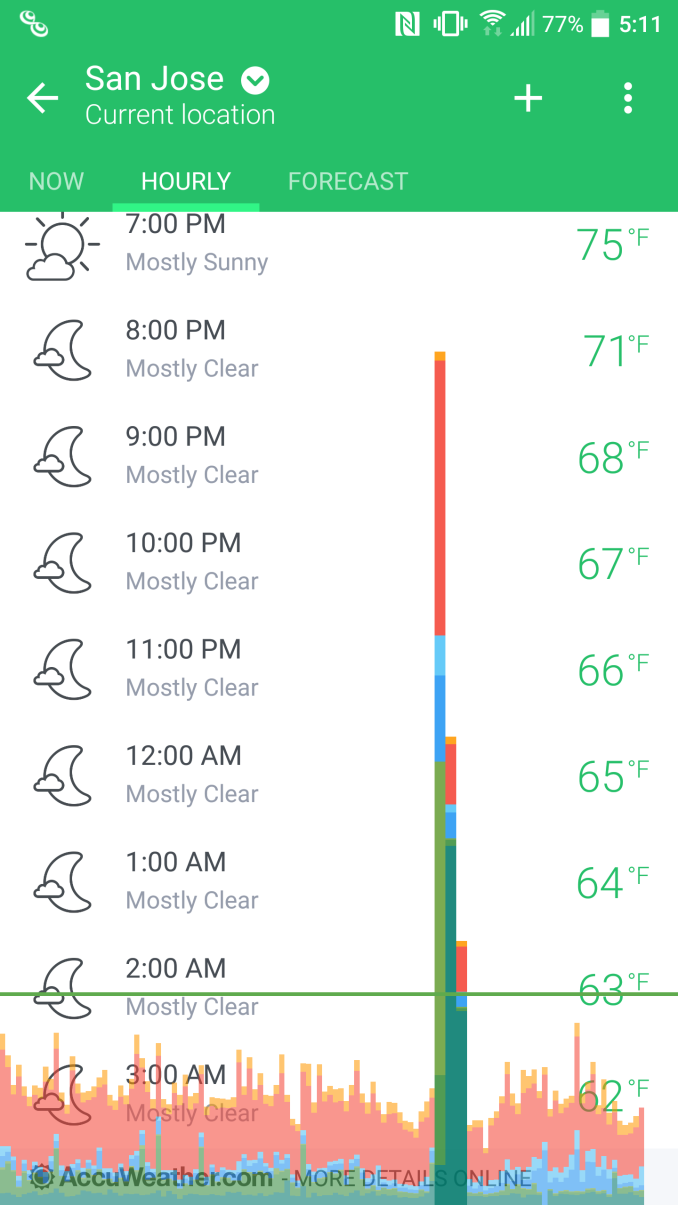
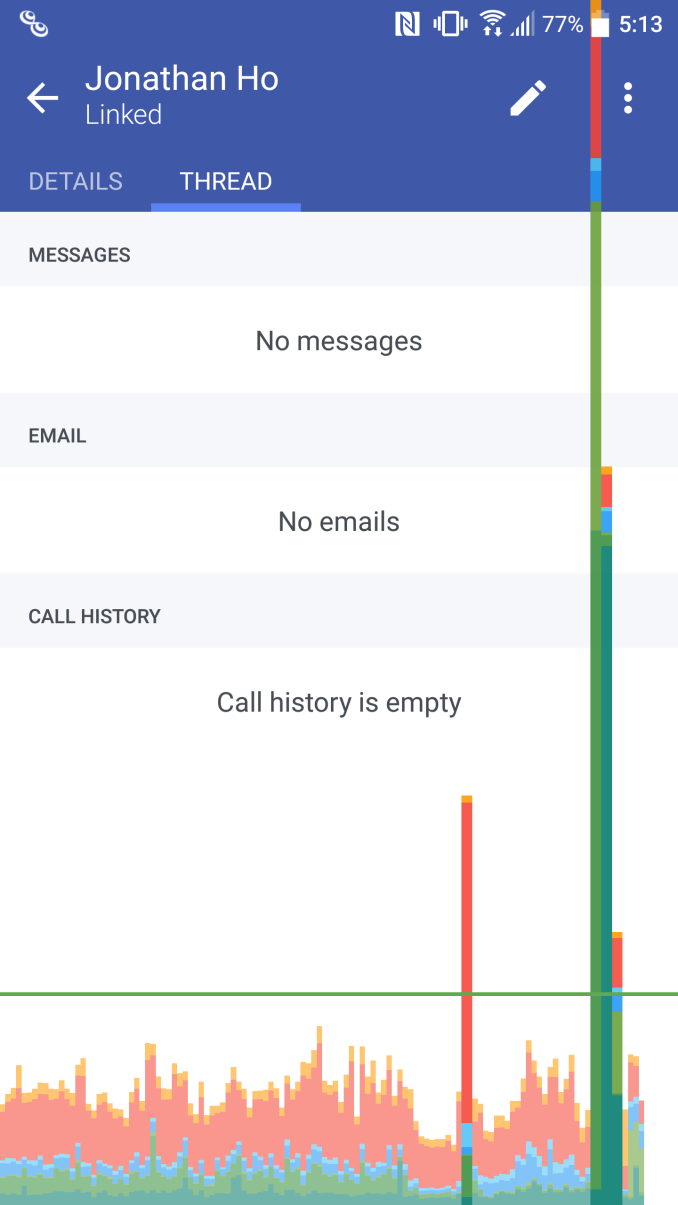
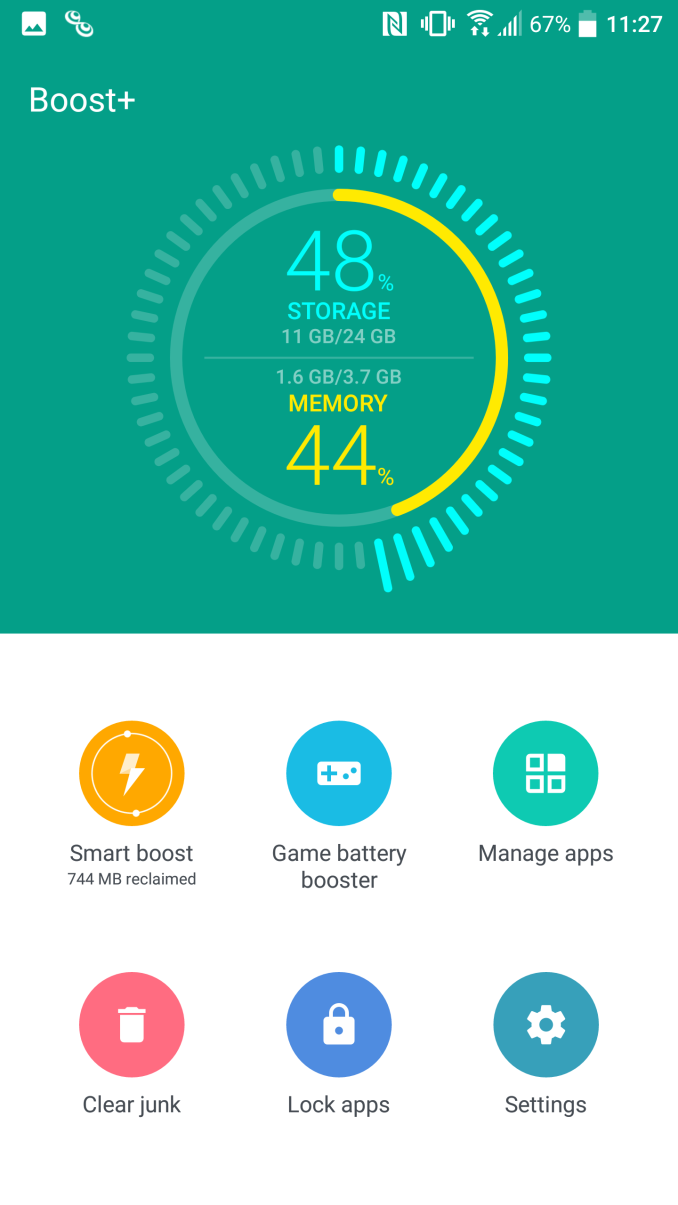


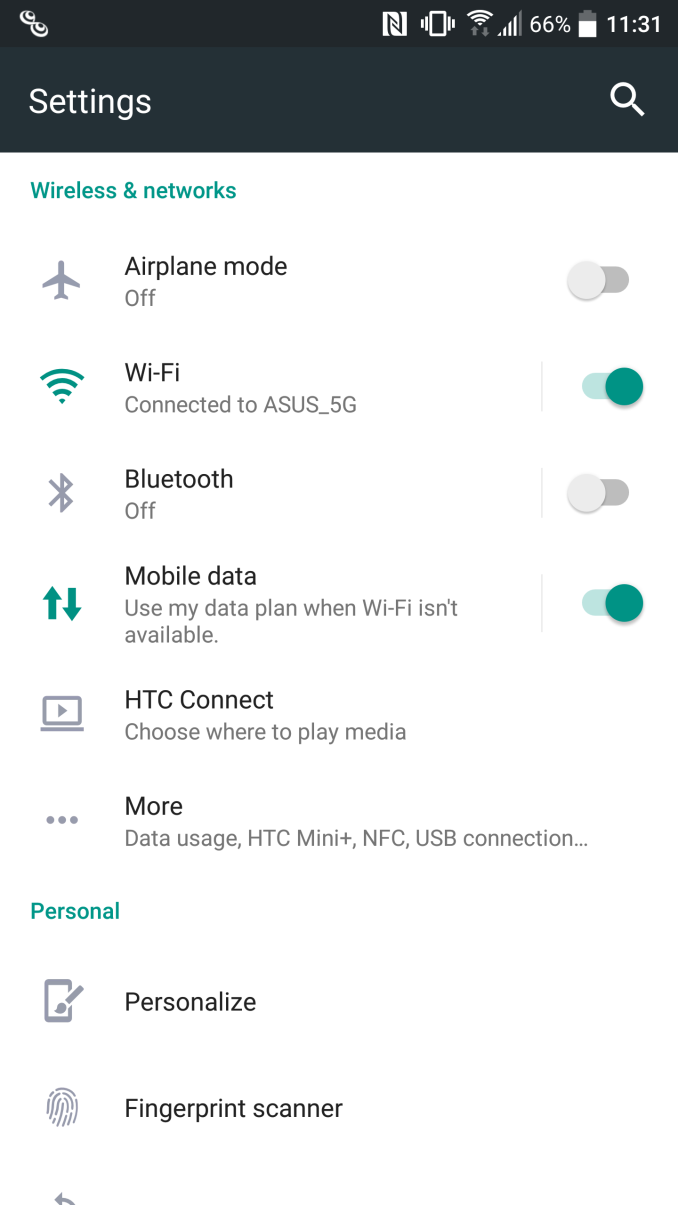
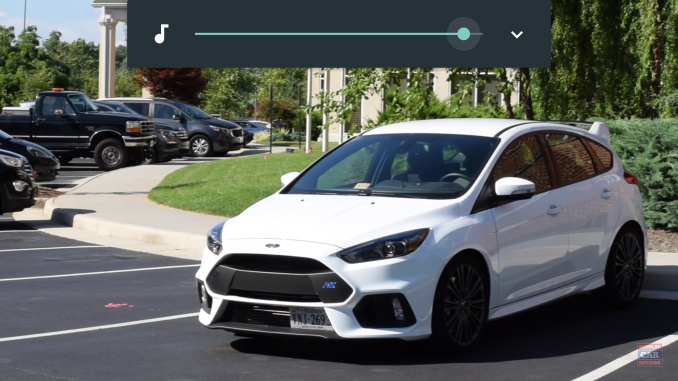








183 Comments
View All Comments
edlee - Wednesday, September 21, 2016 - link
i loved my m8, nothing i got recently feels as good as that phone did.Since that phone, i have had s6, and s7 edge, but for some reason m8 will always stick with me
bennyadamo - Thursday, October 6, 2016 - link
Agreed. The One M8 was a smartphone masterpiece. I owned both the M8 and a Galaxy S5 (and numerous iphones) and in terms of design, performance and user interface you still can't beat the M8. And HTC's Sense UI absolutely blows iOS and "Touchwiz" out of the water (just an aside, but how idiotic is "touchwiz" as a name for a UI? Or for anything else for that matter? I feel embarrassed just typing it). If you think the UI doesn't make a huge difference in your phone experience, try using Sense and Touchwiz side-by-side for a week. Even just small things like the small amount of lag time it takes for the display to re-orient from portrait to landscape when rotating the phone in your hand become infuriating when you have to live with Touchwiz daily. And besides the superior UI, the One M8 just looked and felt like a premium piece of hardware. Many, many times I had people ask me what type of phone it was or inspect it front to back when I let them hold it in their hands, impressed by the solid/premium feel of it. At this point, the One M8 is still (rather unfortunately) HTC's high-water mark. Although having said that I did just order the HTC 10 to take advantage of their sale ($150 off if you buy an unlocked phone directly from HTC from 10/1/16 to 10/8/16).Also, I read some of these comments saying that it's a waste of time to review or buy a phone 7 months after it's launch - that's not true and is a really misguided/misinformed opinion. A lot of people buy a phone that long after it's come out simply because they are waiting for their current phone contract to expire. Other reasons are because some of the teething bugs have been worked out or simply because the price drops after that amount of time (read above re: HTC's current sale on the HTC 10). The average person doesn't need to buy the newest/highest-end/highest-spec phone every year, and most people probably get 2-2.5 years out of a smartphone like this.
ipaulw83 - Monday, September 19, 2016 - link
certainly not dead, the HTC 10 is a far much better choice than the G5, S7 & Note 7 "Fiasco" and other flagships. the only real threat to HTC is the OnePlus 3 but overall the build quality and camera is in favor of HTC 10... i would hate to see them die or break software updates promises as recent news, nevertheless they have a great product that is more special than any other current android flagship (IMHO).i do not own any HTC product currently or stock or anything i use an iphone and an LG nexus 5x but wanted to give my opinion
repatch - Monday, September 19, 2016 - link
"far much better choice" for you perhaps. Why all the generalizing?I for one went with the LG G5, for one reason: the camera. The super wide angle camera on this thing is FANTASTIC, everyone who's seen it marvels at the kind of shots you get with it. It's REALLY fun. For ME, the "far much better choice" is the G5, but that won't apply to most others.
The S7 for me was a no go due to the glass back (can't stand glass backs because they are so prone to breakage, my Nexus 4 went through 3, and NONE of those were broken due to drops). The HTC 10 just didn't have anything 'special' going for it.
Again, that's MY opinion, it's best to sit down and write down what are go/no go's, for YOU, and make a choice that way.
IMHO of course.
Impulses - Thursday, September 22, 2016 - link
I really wanted to like LG's latest, I use an ultra wide lens on my mirrorless M4/3 cameras so that was right up my alley... The overall package (and uber gimmicky modules on their latest) never convinced me.If I HAD picked up a new phone last year it would've been a 10, for the better audio and lack of TouchWiz... My N5 is still trucking along tho, at least until the Pixels come out.
This breadth of choices, even in a market that's contacting, is still something I really like about the Android ecosystem.
FourEyedGeek - Monday, September 19, 2016 - link
Already have the Galaxy S7...smorebuds - Monday, September 19, 2016 - link
And this article is for you and only you...FourEyedGeek - Tuesday, September 20, 2016 - link
Its for all those people who want to make a decision on buying a new smartphone, but might have been helpful to those making a choice months ago don't you think?Freido - Monday, September 19, 2016 - link
HTC 10 is a nice looking phone. But it lacks a high brightness screen. It is a tad bigger as well. Thats my personal opinion. If it was a bit smaller like 4.9", I would have bought it. I've decided to buy Sony X compact or iPhone SE. Recent Sony phones like xlX performance and XZ sports very good displays I think. Looks as stunning as of iphones IPS displays.I was wondering why Anandtech never reviews Sony flagships even though they does release good phones with less gimmicks.
Will anyone consider my suggestion?
fanofanand - Monday, September 19, 2016 - link
They have addressed this in the past, typically Sony does not give out samples to the press. In today's "give me everything for free" world, websites like this simply don't have the excess cash to go buying every cool new toy that comes out. Would it be sweet? Absolutely, but for the most part if Anandtech doesn't review something it's because they couldn't obtain one from the company.